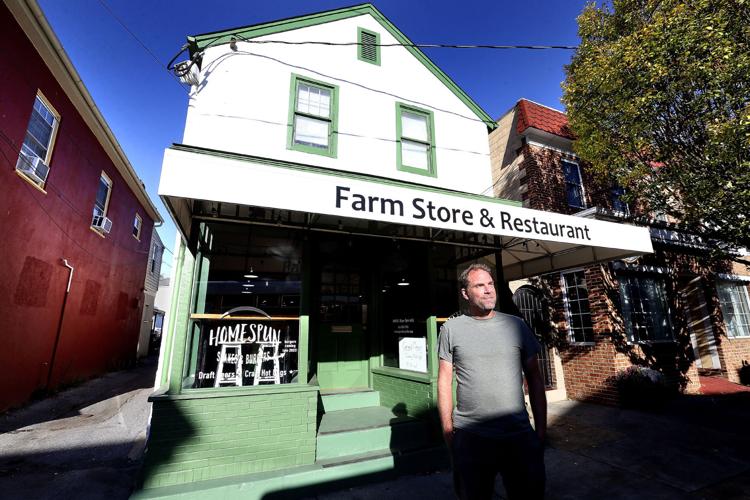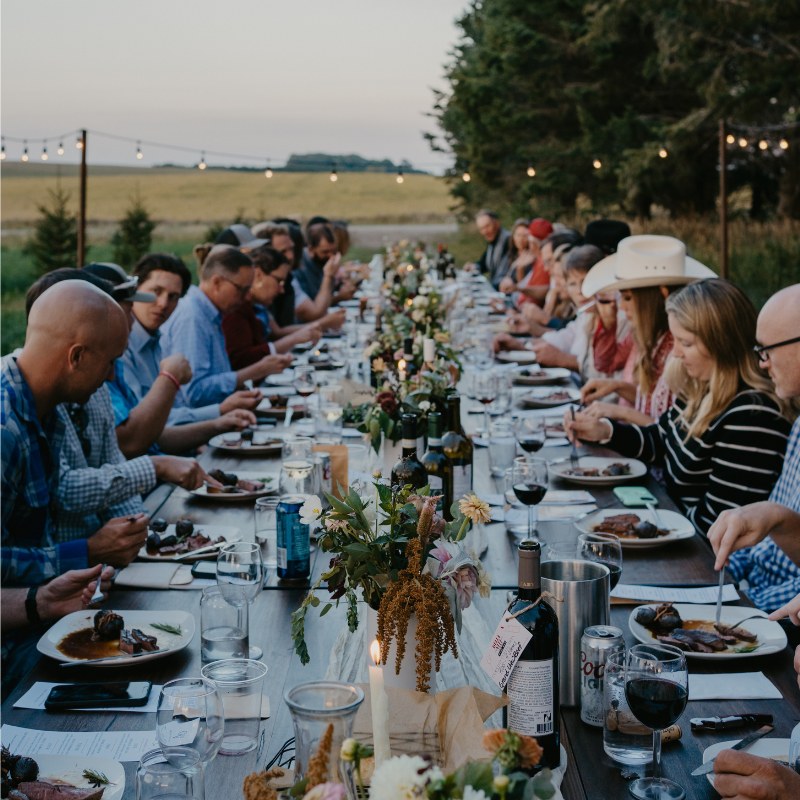Dreaming of starting your own farm-to-table restaurant or store? You’re not alone.
Many people like you are eager to bring fresh, locally sourced food to their communities. But how do you turn that dream into reality? Opening a farm-to-table business is more than just a trend; it’s a commitment to quality and sustainability that resonates deeply with today’s conscious consumers.
In this guide, you’ll learn the essential steps to get your venture off the ground. Whether you’re passionate about promoting local agriculture or simply want to serve delicious food, this article will provide the insights and tips you need to succeed. Ready to make a meaningful impact on your community? Let’s dive in and discover how you can create a thriving farm-to-table experience.

Concept Development
Starting a farm-to-table restaurant involves sourcing local produce and building strong relationships with farmers. Develop a unique menu that highlights seasonal ingredients. Create a cozy atmosphere that connects diners with the origins of their food.
Embarking on the journey of opening a farm-to-table restaurant or store starts with a solid concept. This step lays the foundation for everything that follows. It’s where your passion meets practicality, and where your dream begins to take shape. What is it about the farm-to-table movement that excites you? Your concept should reflect this enthusiasm while also addressing the needs and preferences of your target audience.Understand Your Unique Value Proposition
Identify what makes your concept stand out. Is it a commitment to exclusively local produce? Perhaps it’s a focus on sustainability or seasonal menu changes. Define what will make your farm-to-table establishment unique and appealing.Research And Define Your Audience
Who do you envision as your ideal customer? Are they health-conscious individuals, families seeking fresh meals, or culinary adventurers? Understanding your audience helps tailor your offerings to meet their expectations and desires.Choose Your Location Wisely
Location can make or break your venture. Consider areas with a robust local food movement or communities lacking fresh, local dining options. The right location will attract the right crowd and support your farm-to-table vision.Build Relationships With Local Farmers
A successful farm-to-table concept relies on strong relationships with local producers. Visit farms, talk to growers, and understand their practices. These connections ensure a reliable supply of fresh ingredients and enrich your story.Design An Inviting Space
Your restaurant or store should reflect your concept. Use decor that highlights the farm-to-table ethos, like natural materials or displays of local produce. The ambiance should enhance the dining or shopping experience, making it memorable for your customers.Develop A Menu That Tells A Story
Craft a menu that showcases your concept. Highlight the farms and the journey of the ingredients. Seasonal changes keep it fresh and exciting. This narrative engages customers, adding value to their dining experience.Test And Refine Your Concept
Before a grand opening, test your concept with pop-up events or soft launches. Gather feedback and adjust as needed. This approach reduces risk and increases your chances of success. How will your concept evolve with changing seasons and trends? Keep the conversation open with your audience and be ready to adapt. Your concept is the heartbeat of your business, driving every decision and delighting every diner.
Sourcing Local Produce
Starting a farm-to-table restaurant or store involves sourcing fresh, local produce to ensure quality. Build relationships with nearby farmers and markets to secure seasonal ingredients. Offering locally-sourced foods not only supports the community but also enhances the dining experience with fresher, tastier meals.
Sourcing local produce is a crucial step in opening a farm-to-table restaurant or store. Not only does it support community farmers, but it also ensures that you provide the freshest, highest-quality ingredients to your customers. Engaging with local producers can lead to unique relationships and stories that enhance your brand’s authenticity.Understanding Your Local Agriculture
Begin by getting to know the agricultural landscape in your area. Visit local farms, chat with farmers at markets, and learn about the seasonal produce available. This knowledge helps you plan your menu around what’s fresh and in season, offering your customers an authentic taste of your region.Building Relationships With Farmers
Creating strong relationships with local farmers is essential. Regular visits and open communication can lead to trust and mutual benefits. A farmer once shared with me how a simple conversation led to a special discount on bulk purchases, which significantly helped my restaurant’s budget.Ensuring Consistent Supply
One challenge with local sourcing is ensuring a steady supply. Collaborate with multiple farmers to cover your needs. This approach not only stabilizes your inventory but also supports a wider network of local producers, strengthening your community ties.Quality Over Quantity
Prioritize quality when selecting produce. Even if it means sourcing from a smaller farm with limited output, the superior taste will be worth it. Customers will notice the difference, and this can become a unique selling point for your establishment.Negotiating Fair Prices
While supporting local farmers, ensure that the pricing is fair for both parties. Discuss payment terms and quantities upfront. This transparency not only fosters goodwill but also sets clear expectations, preventing any future disagreements.Promoting Your Local Partners
Highlight your local partnerships in your marketing efforts. Use social media, your menu, and in-store displays to showcase the farms you work with. Sharing these stories creates a deeper connection with your customers, who will appreciate knowing where their food comes from.Consider how your sourcing strategy can evolve over time. Are there opportunities to introduce new produce or partner with different farms? Engaging with your local agricultural community can open doors to fresh ideas and collaborations, keeping your business dynamic and exciting.
Building Community Relationships
Building community relationships is crucial for a farm-to-table restaurant or store. These connections enhance your business’s authenticity and local appeal. They create trust and loyalty among your customers and suppliers. Strong relationships can lead to more collaboration and support.
Understanding Local Needs
Understanding local needs helps tailor your offerings effectively. Engage with community members through surveys and conversations. Find out what they value in fresh produce and local products. Responding to these needs makes your business more relevant and desirable.
Partnering With Local Farmers
Partnering with local farmers ensures fresh and quality produce. Build relationships by visiting farms and discussing mutual goals. Collaborate on seasonal menus and special events. This partnership benefits both your business and the farmers.
Engaging In Community Events
Engaging in community events increases your visibility and credibility. Participate in local festivals, farmers’ markets, and fairs. Offer samples or host cooking demonstrations. These activities showcase your commitment to the community.
Supporting Local Causes
Supporting local causes strengthens community ties. Sponsor events or donate to local charities. Align your business with causes that matter to your community. This approach creates goodwill and positive word-of-mouth.
Creating A Community Space
Creating a community space invites locals to gather and share experiences. Design areas for events like workshops or book clubs. Offer special discounts for community group meetings. This fosters a welcoming and inclusive environment.
Marketing Strategies
Starting a farm-to-table restaurant or store involves connecting directly with local farmers. Build relationships with producers to ensure fresh, quality ingredients. Develop a marketing plan that highlights local partnerships and seasonal menus to attract eco-conscious customers.
Opening a farm-to-table restaurant or store is an exciting venture that blends culinary creativity with sustainable practices. But how do you ensure that your new establishment stands out in the crowded marketplace? Crafting effective marketing strategies is key. Marketing your farm-to-table business requires more than just traditional advertising; it demands storytelling, community engagement, and a clear demonstration of your unique value.Understanding Your Audience
Knowing your audience is crucial. Are they health-conscious foodies, sustainability advocates, or local community members? Each group requires a different approach. Conduct surveys or host small focus groups to gather insights. Use this information to tailor your marketing messages to resonate with what they value most.Building A Strong Brand Identity
Your brand should reflect the essence of your farm-to-table concept. Think about your restaurant or store’s personality. Is it rustic and cozy, or modern and sleek? Your logo, color scheme, and even your menu design should convey this identity. A cohesive brand makes your business memorable and trustworthy.Leveraging Social Media
Social media platforms are powerful tools for engaging with your audience. Share behind-the-scenes content that showcases your farm, the journey of your ingredients, and your chef’s creativity. Use Instagram stories or reels to highlight daily specials or events. Encourage customers to tag your business in their posts, creating a community-driven buzz.Hosting Community Events
Invite locals to experience your offerings firsthand. Host farm tours, cooking classes, or tasting events. These activities not only attract new customers but also strengthen ties with the community. People are more likely to support a business they feel connected to.Collaborating With Local Farmers
Partnering with local farmers can enhance your credibility and expand your reach. Feature their produce on your menu and tell their stories in your marketing materials. Such collaborations can lead to joint promotions, benefiting both parties.Utilizing Email Marketing
Build a mailing list to keep customers informed and engaged. Share newsletters featuring seasonal menu changes, special events, or exclusive offers. Personalize your emails to make your customers feel valued, and watch your engagement rates soar.Creating Loyalty Programs
Encourage repeat business with a loyalty program. Offer discounts, free meals, or exclusive experiences to your loyal customers. A well-structured program not only boosts sales but also fosters a sense of belonging among your patrons. Opening a farm-to-table restaurant or store is not just about offering fresh produce; it’s about creating an experience that resonates with your customers. How will you tell your story and invite others to be a part of it?
Conclusion
Opening a farm-to-table restaurant or store is a rewarding journey. Focus on fresh, local ingredients. Build strong relationships with farmers. Create a welcoming space for your community. Offer unique, seasonal dishes or products. Be transparent about sourcing practices. Educate customers on the benefits of local food.
Keep operations simple and efficient. Listen to customer feedback and adapt. Stay committed to sustainability. Celebrate local food culture and heritage. With passion and dedication, your dream can thrive. Success comes from hard work and genuine connections. Your efforts will nourish your community and inspire others.

